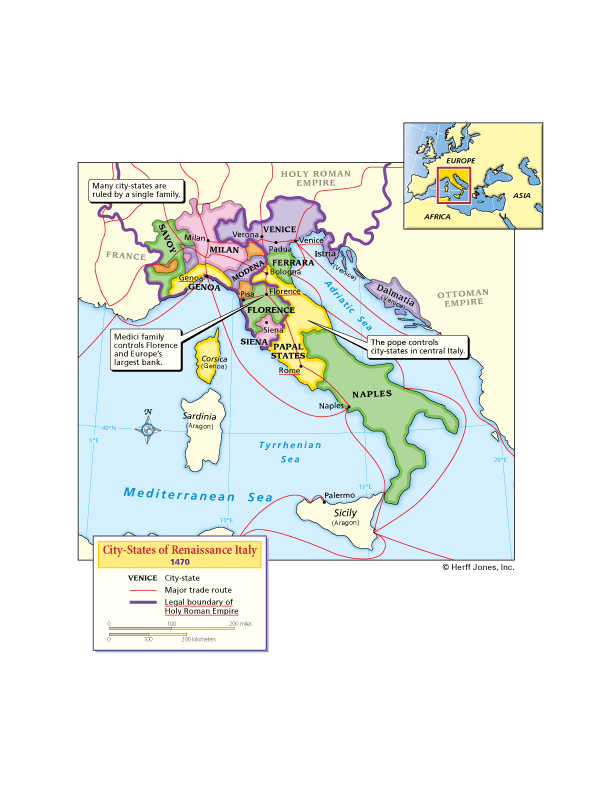
The Emperor had theoretical control over several city-states in northern Italy, but after the 1300s no emperor tried to enforce his authority in the region. The Italian city-states did not send taxes to the Emperor or representatives to the Imperial Diet (parliament).
By 1470 Genoa was in decline. Venice sank much of its navy in 1390. France and Milan alternatively occupied the city for most of the 1400s. Aragon took control of most of Genoa's colonies.
However in the 1500s Genoa would enjoy a revival as the main banking center for Spain beginning with a large deposit from a Genoese captain serving Spain, Christopher Columbus.
Much of the Renaissance began in Florence. Pre-Renaissance writers such as Dante encouraged Italian literature and classical learning. As a result the Tuscan dialect of Florence is the basis for modern standard Italian. The earliest realistic painter Giotto was also from Florence.
Florentine bankers especially the Medici financed governments and nobles throughout Europe. Cosimo de Medici and his grandson Lorenzo were at one time or another patrons to most of the important Italian artists of the Renaissance. The Duomo of Santa Maria del Fiore designed by Filippo Brunelleschi (see page 87) was largely paid for by Cosimo.
Florentine bankers especially the Medici financed governments and nobles throughout Europe. Cosimo de Medici and his grandson Lorenzo were at one time or another patrons to most of the important Italian artists of the Renaissance. The Duomo of Santa Maria del Fiore designed by Filippo Brunelleschi (see page 87) was largely paid for by Cosimo.
Venice continued to be a dominant sea power in the Mediterranean, but its power was threatened by frequent conflicts with the growing Ottoman Empire even though the Ottomans were also Venice's largest trading partner.
The Venetian printer Aldus Manutius developed italic type and the modern use of semicolons. Venice also introduced the use of canvas for painting.
The Venetian printer Aldus Manutius developed italic type and the modern use of semicolons. Venice also introduced the use of canvas for painting.
Rome was restored as the home of the Pope in 1418. Rebuilding the city, especially its palaces, churches, and libraries, was a major goal of popes throughout this period. The crowning achievements of the Roman Renaissance were St. Peter's Basilica designed by Raphael, Michelangelo, and others; the Vatican Museum; and the Sistine Chapel.